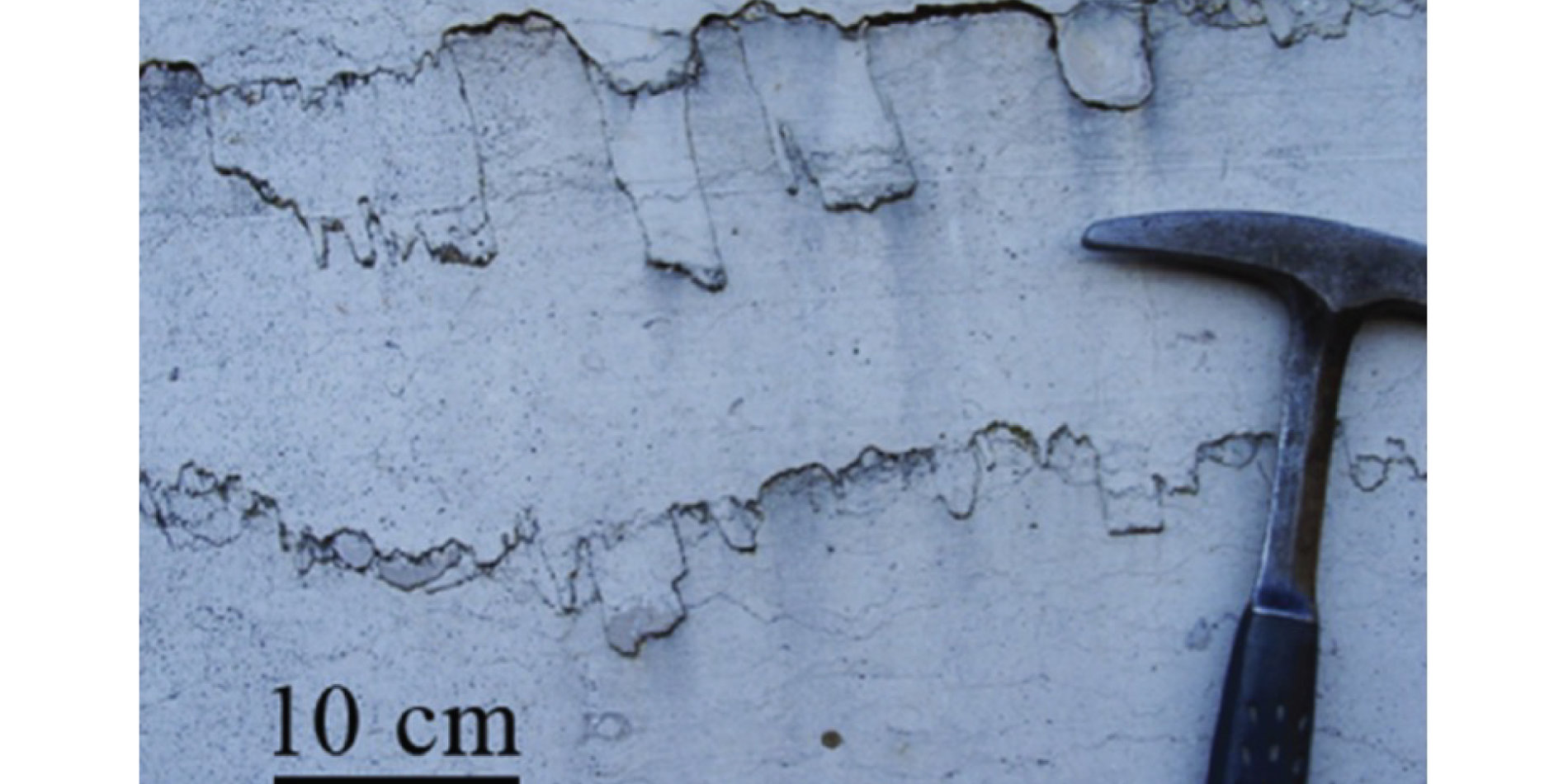Detection of Stylolite Zones in Reservoirs Using Machine Learning Methods
Investigator: Jingru Cheng
Background
Stylolite is a special geopattern that can occur in both sedimentary rocks and deformed zones. Such rough surfaces could change porosity of the matrix and modify the permeability either in a positive way by producing microcracks, or a negative way by dissolving soluble minerals and deposit in the near vicinity, which sometimes could even form to act as horizontal permeability barriers. Multiple fields in Abu Dhabi such as Upper Zakum oil field have encountered big production losses from such barriers in the past. As a potential approach to supplement traditional methods, machine learning methods can be used to locate a stylolite zone in a reservoir and further determine if it is barrier.

Figure 1: One example of stylolite zone [1]
Data Specification
Due to limited access to field data with stylolite, we currently are using synthetic well testing data generated by the simulator Eclipse. Starting from a model with simple-structured reservoir as shown in Figure 2, we constructed a three-layer reservoir with a middle layer of low permeability, changed the location and size of the stylolite part, which serves as a fluid pathway. Numbers and locations of wells were also changed over the reservoir as shown in Figure 3. What we tried to do in this step was to locate and predict the size of the simplified square stylolite zone via the well testing data obtained from Eclipse.

Figure 2: A small-scale, multi-layer reservoir model with impermeable interlayer and stylolite acting as pathway

Figure 3: Changing locations and numbers of wells
Method
As our inputs are well testing data which are basically a collection of time series with either same or different lengths and intervals, strong one-dimensional structures and correlations between adjacent time points should be considered while solving our problem. Considering long short-term memory (LSTM) structure’s advantage of capturing long-term dependencies in sequential data and convolutional neural network (CNN) structure’s strength in extracting short-term and local features, a combination of CNN and LSTM networks could form a suitable model for our multi-output task of predicting location and size of the stylolite zone in the reservoir. Therefore, an LSTM-FCN model as shown in Figure 4 was used to solve this problem based on cases with five wells drilled in the reservoir as shown in Figure 3 (c).

Figure 3: LSTM-FCN model [2]
LSTM layer and 1D-CNN layers are learning in parallel, so a balance between the two structures could be obtained during the training process.
Result
As shown in Figure 4, we could predict the locations and sizes of the stylolite zones with high accuracy by using the LSTM-FCN model


|
|
R2 |
RMSE |
NRMSE |
|
x-coordinate |
0.9263 |
5.2617 |
0.1442 |
|
y-coordinate |
0.9540 |
4.2224 |
0.1136 |
|
size |
0.7983 |
3.3573 |
0.1907 |
Figure 4: Predicted vs. True locations and sizes of the stylolite zones
In the future, we will try to add the complexity of our reservoir model and generalize the stylolite zone. Considering a realistic reservoir with high degree of heterogeneity, our final aim is extracting the location, connectivity and size of the stylolite zone with well testing data.
References
[1] Toussaint, Renaud, et al. "Stylolites: A review." Journal of Structural Geology 114 (2018): 163-195.
[2] Karim, Fazle, et al. "LSTM fully convolutional networks for time series classification." IEEE access 6 (2017): 1662-1669.

